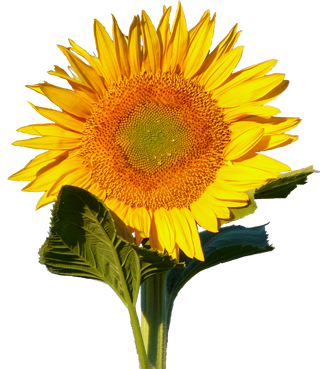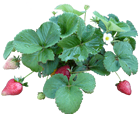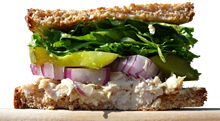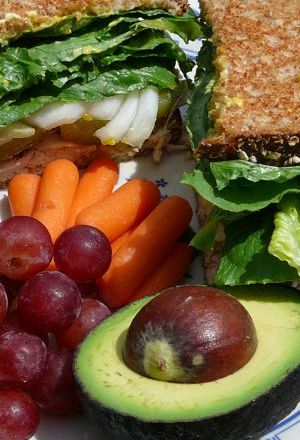
Garden and Plate
The Molecular Biology of Nutrition










Nutrition takes place at the molecular level. Fats, proteins, carbohydrates, vitamins, and all of the other nutritional components in our food are either molecules or individual atoms. The chemical changes these nutrients go through in our bodies are the processes which keep us healthy. Molecules break apart and re-combine according to chemical laws, and through these processes they provide the nutrients and energy that are necessary for life.
When we grow, prepare and consume our food, we are practicing organic chemistry. Plants use the energy of the sun to create carbohydrates out of air and water. When we eat these plants, their carbohydrates break down in our bodies and provide us with energy. In doing so, we release the air and  water back into the environment to be used by the plants again. The other nutrients go through similar cycles, moving from our gardens and farms, through our kitchens and into our bodies.
water back into the environment to be used by the plants again. The other nutrients go through similar cycles, moving from our gardens and farms, through our kitchens and into our bodies.
When we combine a knowledge of molecular biology with the real-world experiences that are ours when we grow and consume our food, we gain a comprehensive understanding of nutrition. This in turn gives us the ability to make informed nutritional choices about the food we eat and the ways in which we prepare it.
From the individual atom to the entire plant, and from the creation of a nutrient to it's digestion, this site looks at the cycles the nutrients go through from both the plant's perspective and our own. Each major section of this website (Garden, Plate, and Molecules) looks at nutrition in a different way. It is my hope that this comprehensive approach will improve our gardening skills and give us a deeper understanding of nutrition than would otherwise be possible.

The Garden is where the nutrients are created. Knowing how and why plants create their nutrients will give us insights into why plants are the way they are. Examining the life-cycle of a variety of plants from seed to harvest in a garden setting is the real-world background we'll use in this section to understand how the plants use molecular biology to create nutrition.
The Plate is where the nutrients are prepared and consumed. This section contains examples of prepared foods, but it's not a cookbook. The focus will be on how nutrients change (or are made available) during food preparation, and how they are absorbed and used by our bodies.
The Molecules section is the most technical, and is used as a reference for the Garden and Plate sections. Molecular structures and the changes they go through in our gardens and bodies are examined in detail for a greater understanding of the foundations of nutrition.
Which kind of fat is better for building cell walls, saturated or unsaturated, and what does "saturated" mean, anyways? What type of carbohydrate is the healthiest, and which foods contain it? Does the protein in an egg contain all of the essential amino acids, and which part contains the cholesterol? How are all of these nutrients created?
There's no shortage of information about gardening and nutrition, but I've found that meaningful answers to questions like these require a basic understanding of molecular biology. The answers to the questions above (and many others) are explained on this site as simply and clearly as possible, but still require a bit of a learning curve in order to be understood completely. If you have no interest in the details of molecular biology, you may still enjoy the Garden and Plate pages. I've segregated most of the science into the Molecules section of the site.
If you're interested in how molecular biology underlies everything that goes on in the garden and kitchen, you'll like the Molecules section. I've created an introductory tutorial on the main Molecules page. It will tell you what you need to know in order to understand most of the explanations on this site. If you want to delve deeper, there are also many in-depth articles on some of the more complicated molecular processes like photosynthesis and respiration.

Can't find the page or article you're looking for? The Site Map has a flowchart that will point you to the correct page and an index to help you find the right article.
There's a lot of information available if you know where to look. Here is where to find many of the best resources that I used while doing research for this site.
